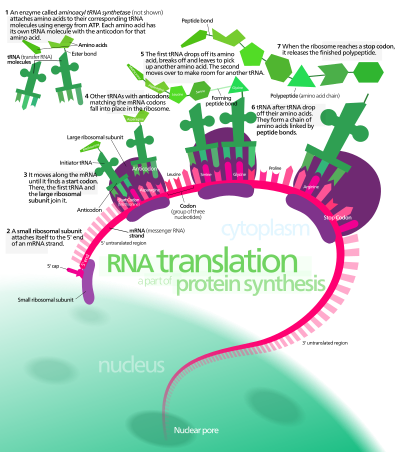Meiosis: Where the Sex Starts
Meiosis  i/maɪˈoʊsᵻs/ is a specialized type of cell division that reduces the chromosome number by half, creating four haploid cells, each genetically distinct from the parent cell that gave rise to them.[1] This process occurs in all sexually reproducing single-celled and multicellular eukaryotes, including animals, plants, and fungi.[2][3][4][5] Errors in meiosis resulting in aneuploidy are the leading known cause of miscarriage and the most frequent genetic cause of developmental disabilities.[6]
i/maɪˈoʊsᵻs/ is a specialized type of cell division that reduces the chromosome number by half, creating four haploid cells, each genetically distinct from the parent cell that gave rise to them.[1] This process occurs in all sexually reproducing single-celled and multicellular eukaryotes, including animals, plants, and fungi.[2][3][4][5] Errors in meiosis resulting in aneuploidy are the leading known cause of miscarriage and the most frequent genetic cause of developmental disabilities.[6]
In meiosis, DNA replication is followed by two rounds of cell division to produce four potential daughter cells, each with half the number of chromosomes as the original parent cell. The two meiotic divisions are known as Meiosis I and Meiosis II. Before meiosis begins, during S phase of the cell cycle, the DNA of each chromosome is replicated so that it consists of two identical sister chromatids, which remain held together through sister chromatid cohesion. This S-phase can be referred to as "premeiotic S-phase" or "meiotic S-phase." Immediately following DNA replication, meiotic cells enter a prolonged G2-like stage known as meiotic prophase. During this time, homologous chromosomes pair with each other and undergo genetic recombination, a programmed process in which DNA is cut and then repaired, which allows them to exchange some of their genetic information. A subset of recombination events results in crossovers, which create physical links known as chiasmata (singular: chiasma, for the Greek letter Chi (X)) between the homologous chromosomes. In most organisms, these links are essential to direct each pair of homologous chromosomes to segregate away from each other during Meiosis I, resulting in two haploid cells that have half the number of chromosomes as the parent cell. During Meiosis II, the cohesion between sister chromatids is released and they segregate from one another, as during mitosis. In some cases all four of the meiotic products form gametes such as sperm, spores, or pollen. In female animals, three of the four meiotic products are typically eliminated by extrusion into polar bodies, and only one cell develops to produce an ovum.
Because the number of chromosomes is halved during meiosis, gametes can fuse (i.e. fertilization) to form a diploid zygote that contains two copies of each chromosome, one from each parent. Thus, alternating cycles of meiosis and fertilization enable sexual reproduction, with successive generations maintaining the same number of chromosomes. For example, diploid human cells contain 23 pairs of chromosomes including 1 pair of sex chromosomes (46 total), half of maternal origin and half of paternal origin. Meiosis produces haploid gametes (ova or sperm) that contain one set of 23 chromosomes. When two gametes (an egg and a sperm) fuse, the resulting zygote is once again diploid, with the mother and father each contributing 23 chromosomes. This same pattern, but not the same number of chromosomes, occurs in all organisms that utilize meiosis.




